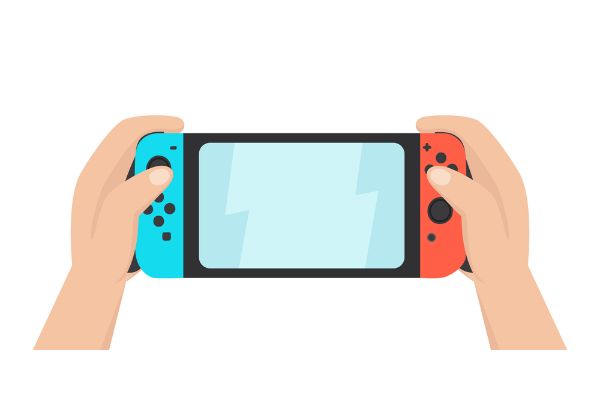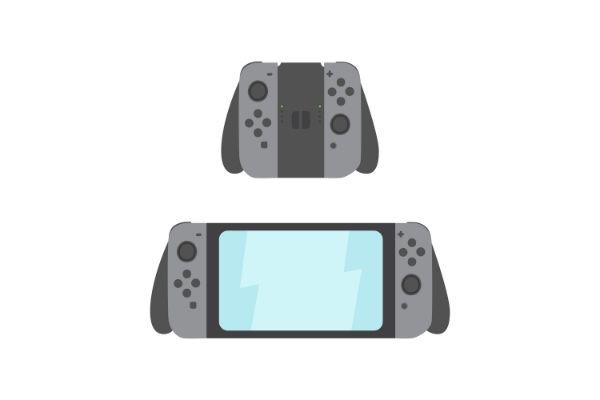Disclaimer: This post may contain affiliate links, meaning we get a small commission if you make a purchase through our links, at no cost to you. For more information, please visit our Disclaimer Page.
The Nintendo Switch hit the gaming scene in 2017, and it is one that remains quite popular with gamers even to this day. To date, it has already sold more units in five years than the company’s Wii gaming console has in over 15.
Part of this appeal may be the fact that it is a hybrid console. Although many people like to use it as a portable gaming system, the developers at Nintendo manufactured the Switch in a way that allows players to plug it into a docking station.
When doing so, they can connect the console to a larger monitor. In this way, players are able to convert the portable experience to one that is similar to how most other home entertainment consoles might function.
The Switch uses internet connectivity for many of its game functions and other features that owners might want to access. Because a stable internet connection can be so crucial to how the Switch operates, some users might wonder if they can set their Switches to use the 5GHz wireless band. We will talk about this possibility in our article below.
Along the way, we will also discuss how you might be able to connect your Switch to the 5GHz frequency, talk about the possible benefits of doing so, and think of some possible fixes for issues that prevent you from making this connection. Before we wrap up, we can look into some ways that you might be able to speed up the connection on your Switch, too.
Table of Contents
Can the Nintendo Switch Use 5GHz Wi-Fi?
Yes, it should be possible for gamers to use 5GHz for their Switch consoles. This is because the developers at Nintendo made sure that the Switch could use both 2.4 and 5GHz bands.
Having said that, this doesn’t necessarily mean that every Nintendo Switch owner can use the 5GHz frequency. Whether you will be able to can depend on how you set up your network.
If you didn’t configure it in a way that works with the console, or if you do not have the hardware necessary to support the band, you may not be able to connect to 5GHz channels. We will discuss some of the ways you can troubleshoot this problem in a later section.
If your router does not support 5GHz, your Switch cannot use it. No other devices that are clients on the home network can either, but you may find that other things run fine on 2.4GHz, so it could be the first time you are aware of this issue.
Additionally, you need to ensure that you have a router that uses a wireless standard that works in harmony with the Switch’s hardware. Most wireless routers on the market today that manufacturers develop for consumers should use at least one of the standards that the Switch supports.
Finally, you’ll also need to check the security protocols that you used when you set up your Switch. Again, the device should be able to work with most of these. Nintendo has an article here, about how to get there.
How Do I Connect My Switch to 5GHz Wi-Fi?
As we touched on earlier, you don’t necessarily need an active internet connection in order to play and enjoy many of the Nintendo Switch’s titles.
However, you do need it if you want to do any competitive or cooperative online play, buy digital games, access content from Nintendo’s online shop, or get timely announcements from the company right on your console.
Since good connectivity can improve the overall enjoyment players have when exploring everything the Switch has to offer, there are ways to get online using the device’s own system settings.
Here is one of the most straightforward ways to get your Nintendo Switch to connect to a 5GHz Wi-Fi frequency on your network:
1. Activate your Nintendo Switch. Once it boots up completely, check out the Home screen.
2. Look for an icon near the right end of a row of icons. This one should look like a typical digital gear.
3. Select this icon to go into the unit’s System Settings menu.
4. Once you are there, you should see a long list of menus on the left-hand side of the screen. Scroll down this menu until you get to the category with the ’Internet’ label.
5. From here, go over to and select the heading for ’Internet Settings’. If this is your first time setting up the Switch for the internet, it will probably search for available networks to which it can connect. This action may take some time.
6. Once your Switch locates available networks, you will see the appropriate list appear.
7. If you have both 5GHz and 2.4GHz available, you should see each of them appear with the appropriate numerals at the end of the network SSID. This assumes that you have not renamed your networks to something more personal, but both bands should still appear in some form.
8. You can select the 5GHz network from this list. If you have a network that the Switch remembers, you shouldn’t need to input the password. Otherwise, type in the password to let the device connect to 5GHz.
What Is the Benefit of Connecting the Nintendo Switch to 5GHz?
Before we get into some of the possible benefits of having your Switch use the 5GHz band, we should go over different connection speeds between the two frequencies. The 2.4GHz band, typically, will have a longer range.
This means that the signal should be able to travel further, and it should also be able to deal with physical obstructions. Conversely, however, it is the frequency that might be more prone to interference on the network line itself. It is also true that many of your other devices in the home probably operate on 2.4GHz.
Unlike some of your modern smart tech that can switch between the two, you may have some appliances that can only use this band, thus making it harder for each individual device to get a good signal.
On the other hand, the 5GHz band tends to deal with noise or traffic that can result in signal interference quite well. It is a frequency that tends to provide most users with a more stable, clutter-free connection. Between the two bands, you should see higher speeds with devices that are connected to the 5GHz frequency. If you have a Switch that seems to have trouble staying connected to or downloading from a 2.4GHz channel, putting the device on a 5GHz band could be one of the possible benefits here.
There may be some users within the Nintendo Switch community that say the device doesn’t perform well when it is part of a 2.4GHz signal. However, we would be remiss here if we did not mention that many other players seem to get perfectly fine speeds from their devices when they are operating on this frequency.
While your Switch can see some benefits in switching over to the 5GHz band, it may be best to leave it on 2.4GHz if you notice that your speeds are within acceptable ranges.
Using the same System Settings menu that you did in order to get the device to connect to 5GHz, you can run a test that will tell you the typical download and upload speeds the Switch gets when you connect it to the internet.
Once you run the test, other information that relates to your internet connection will also display for you on the screen. You can use your own best judgment to decide if the speeds you are getting on 2.4GHz are reasonable already. Because there are possible downsides to a 5GHz connection, it may be better to leave your Switch on 2.4GHz, particularly if you experience no issues.
Why Can’t the Nintendo Switch Connect to 5GHz Wi-Fi? (Reasons & Fixes)
As we discovered in an earlier section, it should be relatively simple for any gamers to switch their devices over to the 5GHz band. In some cases, this may not be possible, and we can look at some of the main reasons for that here.
Our list may not provide you with every single eventuality, but it should cover a good range of the common problems that Switch owners face in this area. Here are just a few of the reasons yours might have a connection problem, and what you can do about it:
1. Check to make sure that your internet hardware does indeed support both bands. If it does not, consider getting a different router that has dual-band capabilities.
2. Your hardware may use security protocols that the Switch does not support. The device should support most of the common security options that you can set up for your home network.
However, it does not support TKIP. Check your settings to see if this is the protocol you are using, and you can make adjustments accordingly.
3. The channel that your band is on can make a difference in the Switch’s connectivity. Although there is no hard rule, the device may have trouble trying to connect once the channel nears the 150 mark.
If this is the case for you, try lowering the channel and connecting the Switch again to see if the problem persists.
4. It is possible that your Switch is preferring to connect to 2.4GHz over 5GHz. You can test this by turning off the 2.4GHz connection to see if the device will choose the other one.
What Are Some Other Ways To Make the Switch’s Connection Faster?
Although a 5GHz band connection should provide better speeds for the Switch, there might be a few other ways for you to speed it up. The first thing to do is connect to a different network.
This will help you determine if the bottleneck is because of a problem with your own networking equipment or the settings you use. Alternatively, your router might be in a bad spot.
Although your choices for moving it away from the modem are not infinite, you can try moving it to a physical location that could improve its signal.
Conclusion
The Switch uses some pretty modern technology in gaming, and it can handle both 2.4 and 5GHz bands for internet connections. If the former works well for you already, you may be able to just leave it alone. If not, connecting your device to the 5GHz frequency could help with your Switch’s online play or downloading issues. You should be able to do this right from the menu, and you can use our troubleshooting tips if you have problems here.


